The Ha Giang Loop is a hidden gem nestled in the northernmost region of Vietnam. This enchanting and rugged mountainous area offers a stunning landscape filled with towering limestone peaks, cascading waterfalls, and vibrant green rice terraces. As you navigate the winding roads that snake through this remote province, you will be rewarded with panoramic views that will leave you awe-inspired. Discover the rich culture of ethnic minority tribes, indulge in delicious local cuisine, and embark on thrilling adventures as we delve into all that the Ha Giang Loop has to offer. Here is the ultimate guide to the Ha Giang Loop. You will find everything you need to know; ways to navigate the loop, how to book a tour, places to visit on the Ha Giang Loop, costs, places to stay and much more!
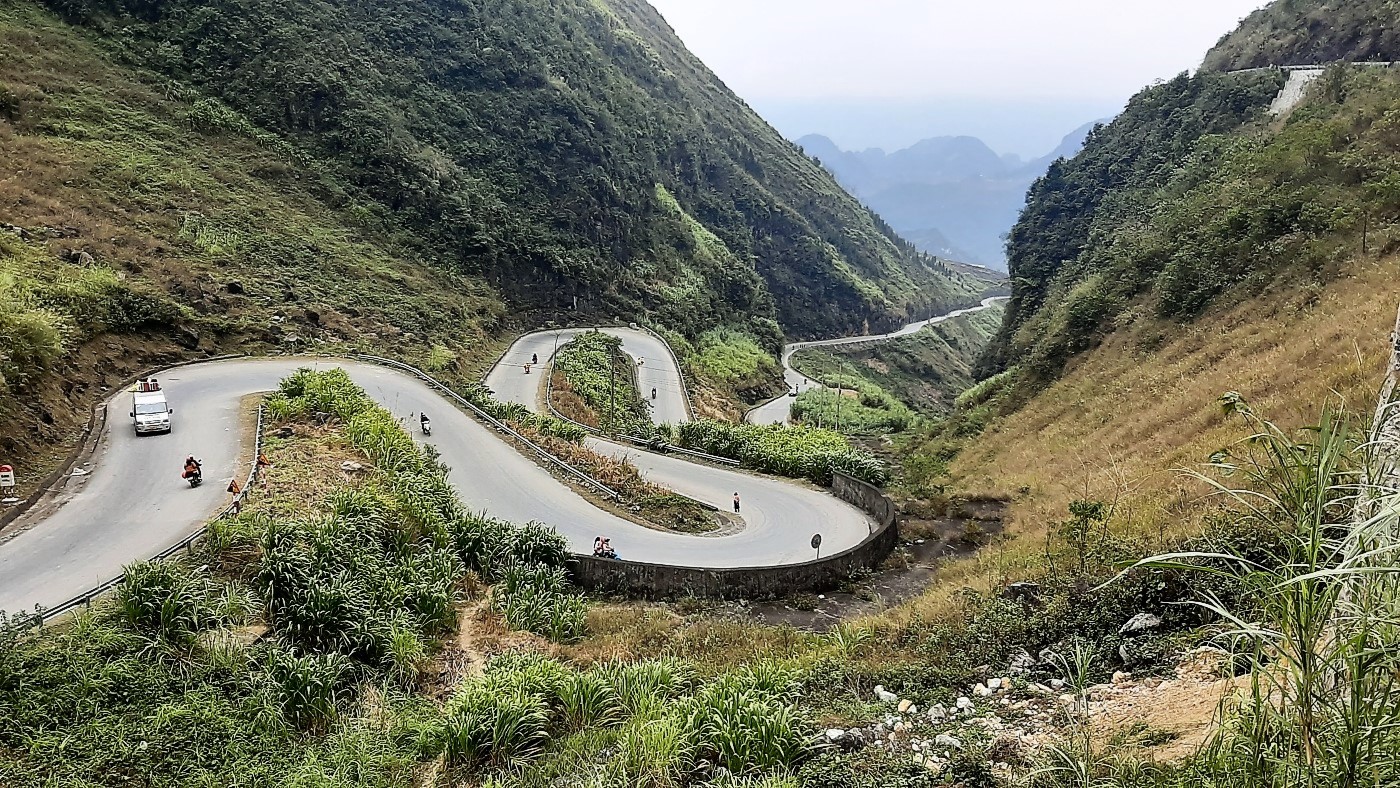
Disclosure: Wander Vietnam contains affiliate links. If you click on these links and make a purchase, we will earn a small commission at no extra cost to you. You can find our full disclosure policy and privacy policy here.
Ways to travel the Ha Giang Loop
When deciding to travel the Ha Giang Loop you have a few options of how to do it. Below you will find a variety of different ways to explore the Ha Giang Loop.
Ride the Ha Giang loop with a motorbike solo
A popular way to discover the Ha Giang Loop is by renting a motorbike and embarking on the journey by yourself. A major benefit of doing it this way is that you have the freedom to go at your own pace and on your own timescale. However, for first-time riders, we would not recommend this option.
Cost of a bike rental for the Ha Giang Loop
The cost of the bike rental is generally the same price in all of the major hostels in Ha Giang. However, prices differ depending on the type of motorbike you wish to rent. We rented our motorbike through Jasmine Hostel and the prices were as follows:
110 cc semi-automatic – 200,000 vnd per day + 100,000 vnd per day for insurance
125 cc 4 gears manual – 250,000 vnd per day + 120,000 vnd per day for insurance
150 cc 5 gears manual – 350,000 vnd per day + 150,000 vnd per day for insurance
Note: Automatic motorbikes are not recommended on this route simply because they are not powerful enough to drive up the inclines. We rented a 110 cc semi-automatic, as this is what we are used to driving in Hanoi, but this was barely powerful enough. From this experience, our recommendation would be to upgrade to a 125 cc or 150 cc bike.
Helmets are free of charge and are provided when you rent a motorbike. Another cost that you may incur when renting a motorbike is the rental of protective padding for knees and elbows. Whilst not compulsory, they are recommended. The price for protective padding is around 30,000 vnd extra per day. Furthermore, insurance is not compulsory, but we highly recommend it. The road on the Ha Giang Loop can be treacherous and that extra per day to ensure you are covered for bike damages is worth the peace of mind.
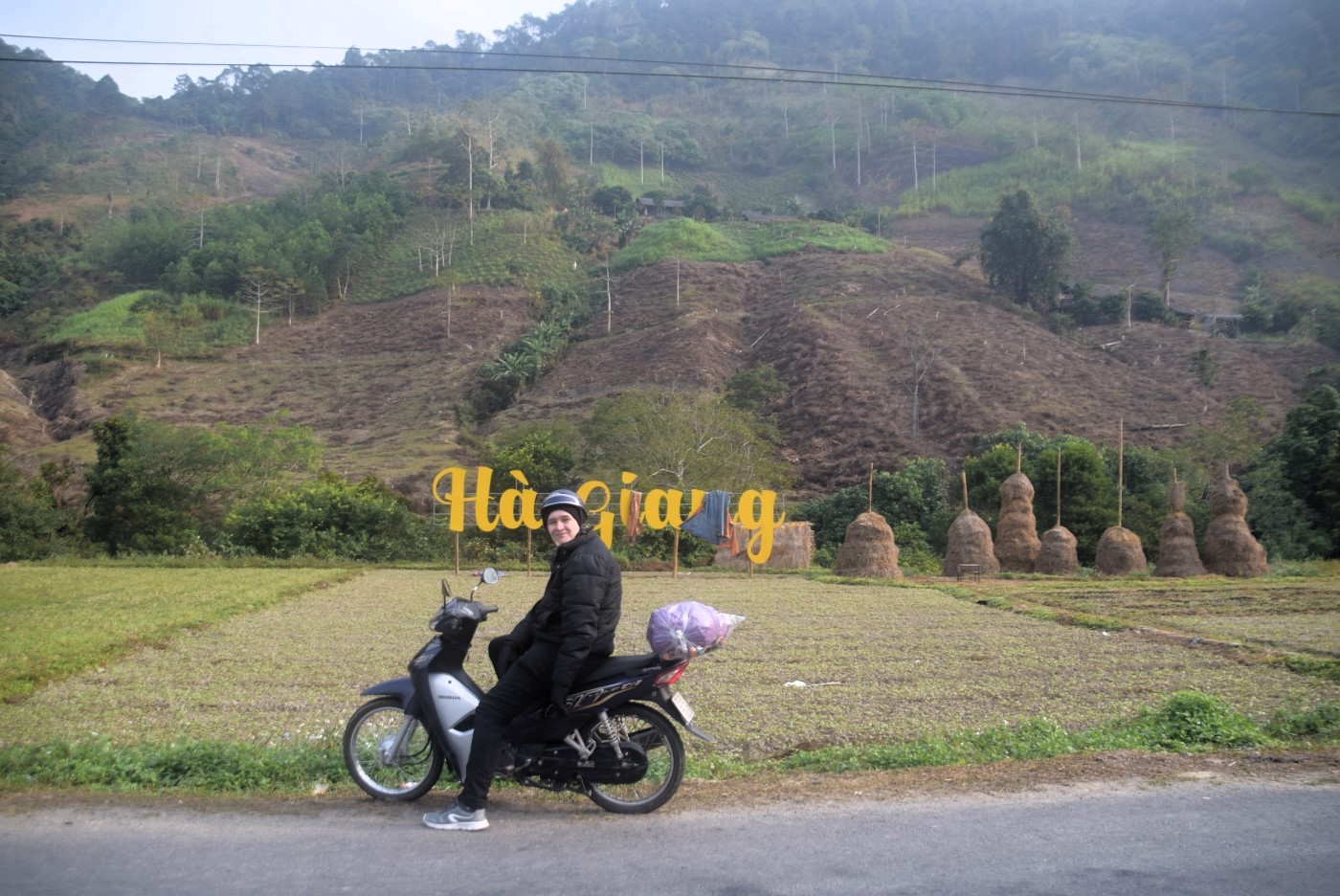
Where to rent a motorbike for the Ha Giang Loop
Plenty of hostels in Ha Giang City offer motorbike rentals for visitors to do the Ha Giang Loop. Here are a few well-known and trusted providers:
Jasmine Hostel (we used this hostel to rent our motorbike)
Ha Giang Loop group tour riding by yourself
Another popular option, especially for solo travellers not wishing to take on the Ha Giang Loop by themselves, is to join a tour group but drive by yourself. This option is perfect for travellers with motorbike experience who are seeking a more social aspect. You get the benefit of riding in a group and having the safety net of not getting lost, or having help on hand should you break down or need assistance with anything.
The cost of joining a Ha Giang Loop tour
The cost of joining a Ha Giang Loop tour varies depending on how many days you wish to go. The most popular option on offer is a 3-day tour which includes all costs; the motorbike, a guide, accommodation, and food. Prices range from 4,000,000 vnd per person to 6,000,000 vnd per person depending on the company and the motorbike you chose to ride.
Travel with an Easy rider
The final option for exploring the Ha Giang Loop is to travel with an Easy Rider, similar to the service offered in Dalat. Easy Riders are local people who have a wealth of knowledge of the area and are familiar with the route and road. With this option, you simply sit back and relax on the back of a motorbike, whilst the driver takes care of the navigation. This allows travellers to explore the area without having to worry about driving themselves. This option is particularly useful for those who don’t have much experience riding motorbikes.
Cost of doing the Ha Giang Loop with an Easy Rider
Riding the Ha Giang Loop with a professional driver is the option that entails the highest costs. Again, prices vary depending on how long you choose to do the loop. Prices for a professional driver generally range from 6,000,000 vnd – 8,000,000 for a 4-day / 3-night tour.
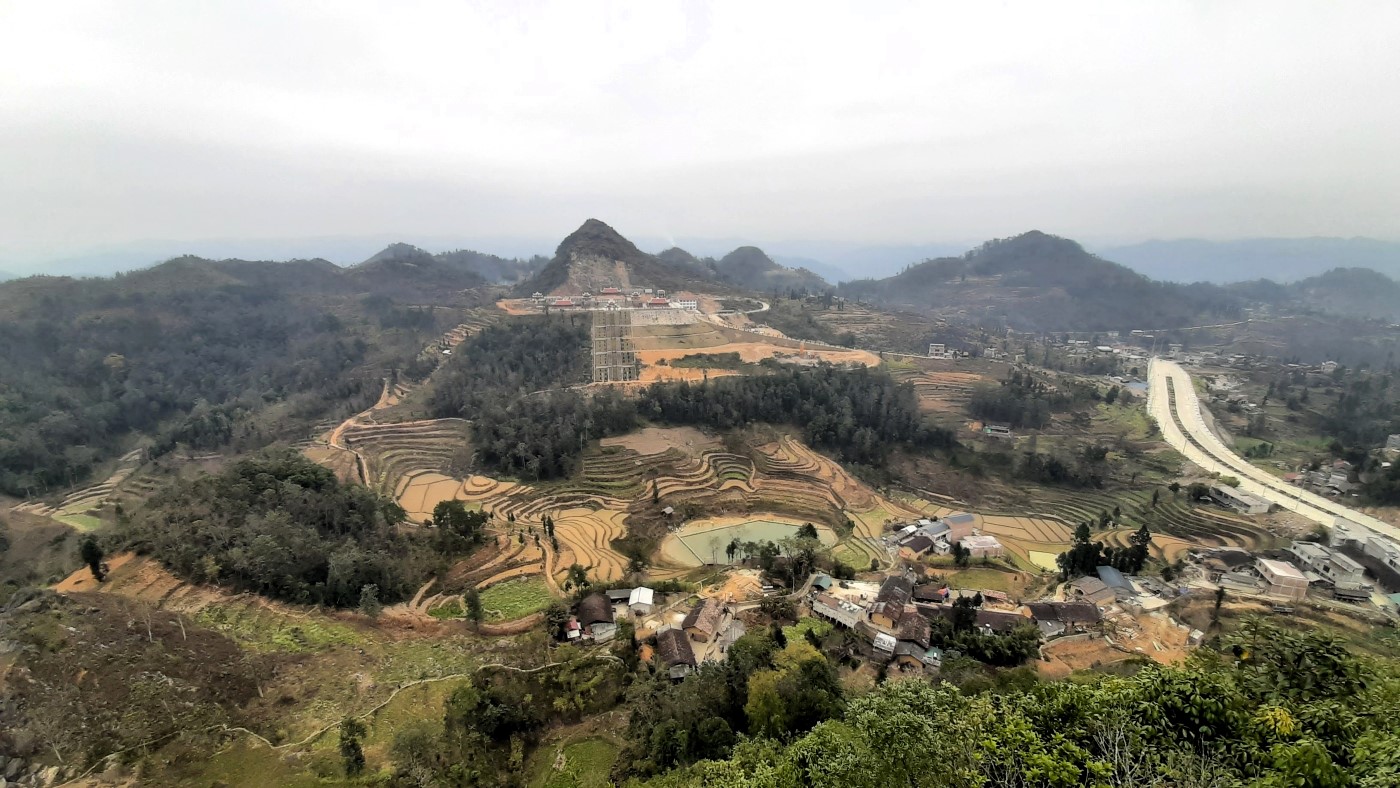
Ha Giang Loop route and places to stay on the Ha Giang Loop
The Ha Giang Loop can be completed in 3 – 5 days, depending on how fast and how much driving you are willing to do each day. Below we have highlighted the main places to stop, as well as the distance between each place. Whilst the distance may seem short the journey itself can be quite long as you need to drive slowly and account for all the turns and uneven paths you may need to navigate.
Day 1: Arrive in Ha Giang City from Hanoi
The city itself is quite small and has some nice restaurants and coffee shops to hang out in. If you’re making your own way to Ha Giang City without a tour, we recommend you book your transport in advance. The journey from Hanoi takes around 7 hours and costs between 200,000 vnd for a basic sleeper bus to 400,000 vnd for a luxury sleeper bus.
Where to stay in Ha Giang City: We recommend you stay at the place where you are renting your bike, or where you will start your tour from. We stayed at Jasmine Hostel, as this is where we had arranged to collect our bike rental.
Day 2: Ha Giang City to Yen Minh (130km)
Start your journey from Ha Giang City towards Quan Ba, known for its iconic twin mountains called Fairy Bosom. Along the way, you’ll pass through lush rice terraces and small ethnic villages where you can interact with locals and learn about their traditional customs. Just outside of Quan Ba, you will find Lung Khuy Cave for a quick visit. After, continue your ride through the majestic Dong Van Karst Plateau Geopark, a UNESCO Global Geopark filled with towering limestone formations before settling in for the night in Yen Minh.
Where to stay in Yen Minh: Milk Milk Homestay
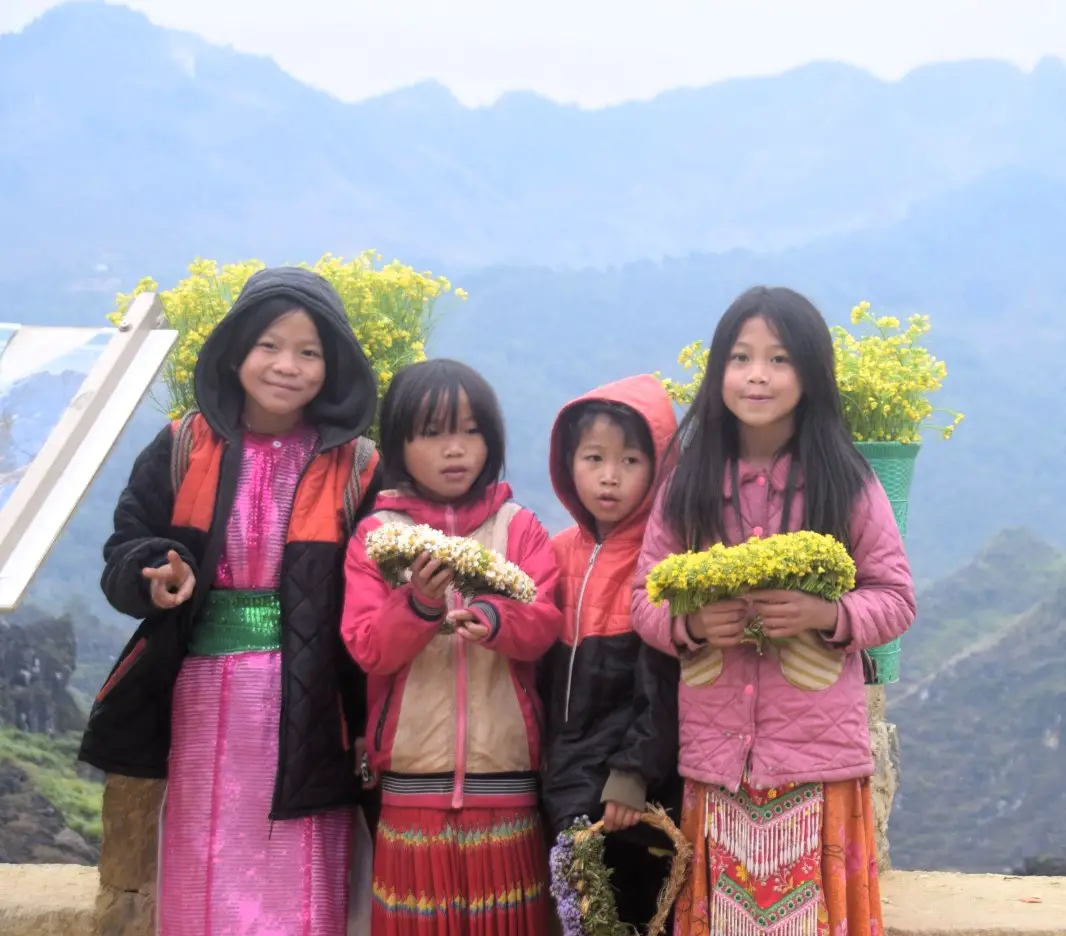
Day 3: Yen Minh to Dong Van (45km + 40 km to Lung Cu Flag Tower)
Today consists of roads winding through the mountains that offer panoramic views of terraced rice fields, limestone karsts, and deep canyons carved by rivers over centuries. Although it requires a 3-hour round-trip detour, Lung Cu Flag Tower should not be missed. Situated on Dragon Mountain at an altitude of 1,700 meters above sea level, it marks the northernmost point of Vietnam and provides a commanding view over vast stretches of mountains and valleys. Dong Van is a charming town, famous for its well-preserved old quarter made up of traditional Hmong houses. Walking down its narrow streets feels like stepping back in time as you witness the authentic local life unfolding before your eyes. Don’t miss visiting Dong Van Market, where various ethnic minority groups gather to trade their produce and handmade crafts.
Where to stay in Dong Van: Nha Nghi Quang Trung
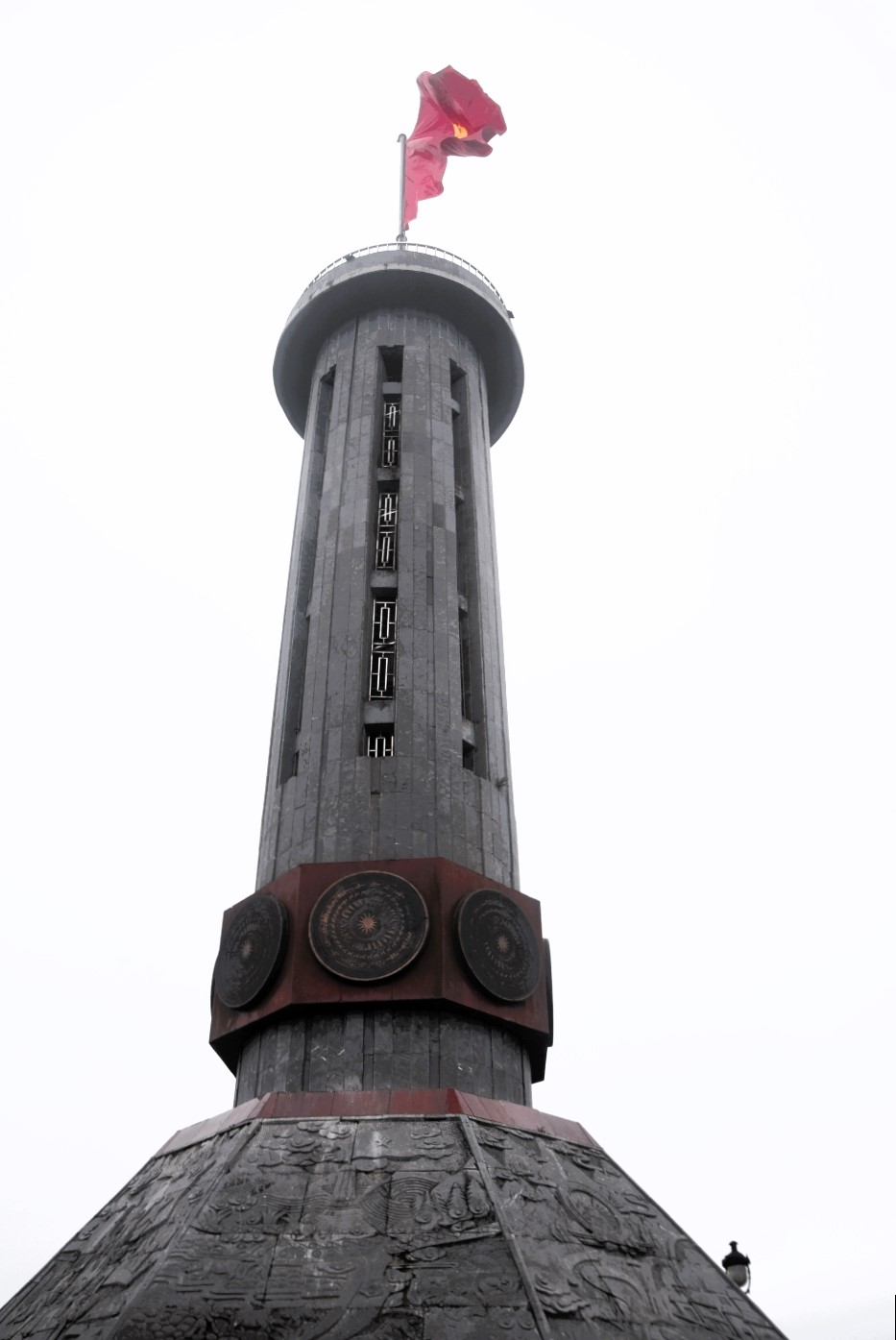
Day 4: Dong Van to Du Gia (100 km)
As you drive along the winding mountain roads towards Du Gia, be prepared for jaw-dropping views that showcase the diversity of Vietnam’s natural beauty. One highlight of the journey is Meo Vac Market, a vibrant weekly gathering where various ethnic minorities come together to trade goods and socialise. Continuing your trip towards Du Gia, you’ll encounter Ma Pi Leng Pass—a road often hailed as one of the most spectacular in Vietnam. Perched precariously on sheer cliffs overlooking the Nho Que River below, it offers awe-inspiring panoramic vistas that will make your heart skip a beat. Here is your opportunity to take a relaxing boat ride down the river and explore Tu San Alley, Southeast Asia’s deepest canyon. Tickets cost 120,000 vnd and the boat ride takes around 30 minutes. Arriving at Du Gia Village is like stepping back in time. This remote village tucked away amidst towering mountains is home to the Red Dao ethnic minority.
Where to stay in Du Gia: Muong Tra Garden Homestay
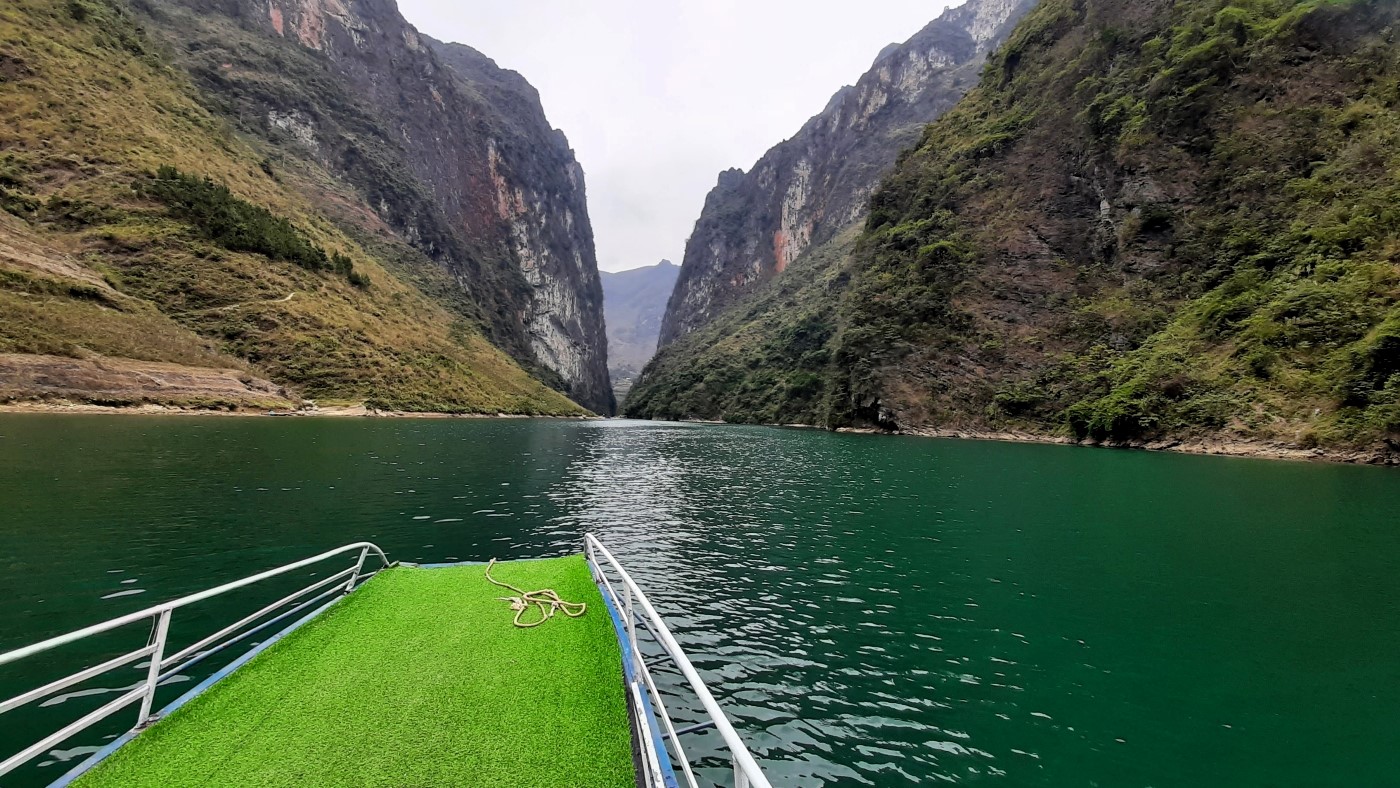
Day 5: Du Gia to Ha Giang (70 km)
Today is the last leg of your journey. The journey to Ha Giang is pretty straightforward and boasts similar views as previous days. We recommend you leave for Ha Giang City early to avoid having to spend a night in Ha Giang. Once you reach Ha Giang, you should have enough time to grab a bite to eat, freshen up and take the bus to your next destination in Vietnam.
If you want to extend your motorbike trip, a trip to Cao Bang province to marvel at Ban Gioc Waterfalls is a good addition.
When is the best time to ride the Ha Giang Loop?
When it comes to deciding on the best time to visit Ha Giang Loop, there are a few factors to consider. The weather and road conditions play a significant role in determining the ideal time for your trip. Here’s a breakdown of the seasons in Ha Giang:
Ha Giang Loop in Spring (March-April)
Springtime brings mild temperatures and blooming flowers across Ha Giang. The landscape transforms into a kaleidoscope of colours as peach blossoms and plum flowers cover the hillsides. This period is perfect for photographers looking to capture stunning shots of nature at its finest.
Ha Giang Loop in Summer (May-August)
Summer brings warmer temperatures with occasional rain showers. During this time, the rice fields turn lush green, creating picturesque vistas throughout Ha Giang Loop. It’s an excellent time for trekking enthusiasts who can enjoy clearer skies and easier access to remote villages.
Ha Giang Loop in Autumn (September-November)
Autumn is considered one of the best times to visit Ha Giang Loop due to its pleasant weather conditions. The temperature cools down after summer, making it comfortable for outdoor activities like hiking or motorbike tours. Additionally, September marks harvest season when rice fields turn golden yellow—a truly mesmerizing sight!
Ha Giang Loop in Winter (December-February)
Winter in Ha Giang brings chilly temperatures ranging from 10°C (50°F) during the daytime and dropping further at night. While it might not be everyone’s cup of tea due to colder weather conditions, winter offers unique experiences such as witnessing snowfall on mountain peaks or enjoying hot drinks by a fireplace.
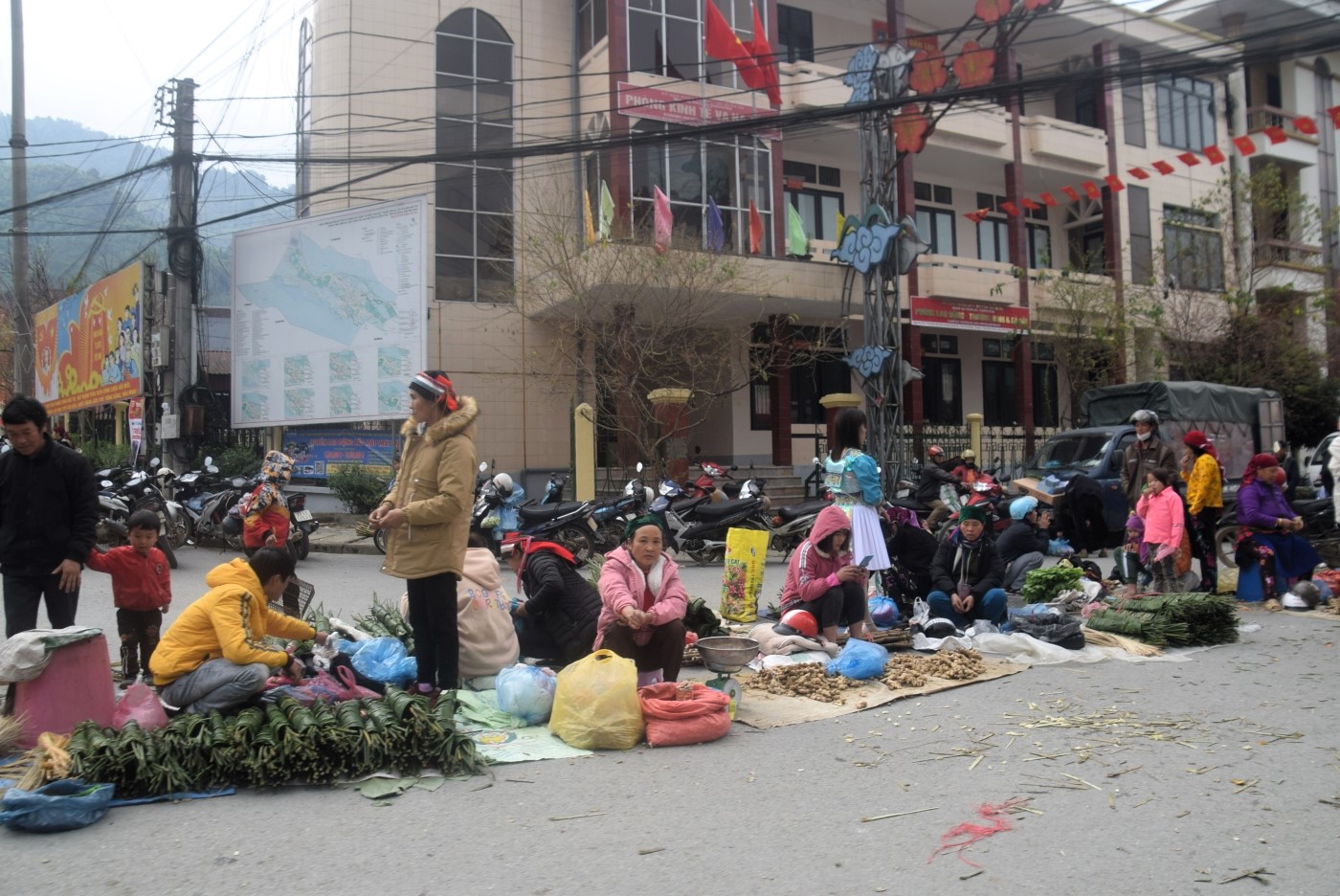
Apart from weather considerations, it’s crucial to check the road conditions in Ha Giang Loop. Some parts of the loop might get muddy and slippery during heavy rain or inaccessible due to landslides.
What to pack for the Ha Giang Loop
Firstly, you should pack light for your trip. Try not to take your backpack that you are using for your wider trip through Vietnam or Southeast Asia. There isn’t much space on the bikes and you don’t want it to weigh you down. You can ask the hostel to leave your main luggage locked away there and pack a smaller bag to take with you for your motorbike trip. Here’s a comprehensive packing list to ensure you have everything you need for an unforgettable adventure:
Clothing
- Comfortable hiking shoes: The terrain can be challenging, so sturdy footwear is essential.
- Layered clothing: Pack lightweight clothes that can be easily layered as temperatures can vary throughout the day.
- Rain jacket or poncho: Be prepared for unpredictable weather conditions.
- Long-sleeved shirts and pants: Protect yourself from sunburns, insect bites, and scratches while trekking.
Personal items
- Toiletries: Toothbrush, toothpaste, soap, shampoo, sunscreen, and any other personal hygiene items you require.
- Mosquito repellent: Protect yourself from mosquito bites during the evenings and nights.
- Medications: Bring any necessary prescription medications along with a basic first aid kit.
Electronic devices
- Camera or smartphone with good camera quality: Capture the stunning landscapes of Ha Giang Loop.
- Power bank: Ensure your devices stay charged even when electricity is limited.
Documents
- Passport/Identification card: You will need to show these to check into your accommodation along with your visa
- Travel insurance documents
- Bike rental agreement & essential phone numbers in case you break down
Other essentials
- Cash/Credit cards
- Local currency (Vietnamese Dong)
- Maps/Guidebooks
- Snacks/Energy bars
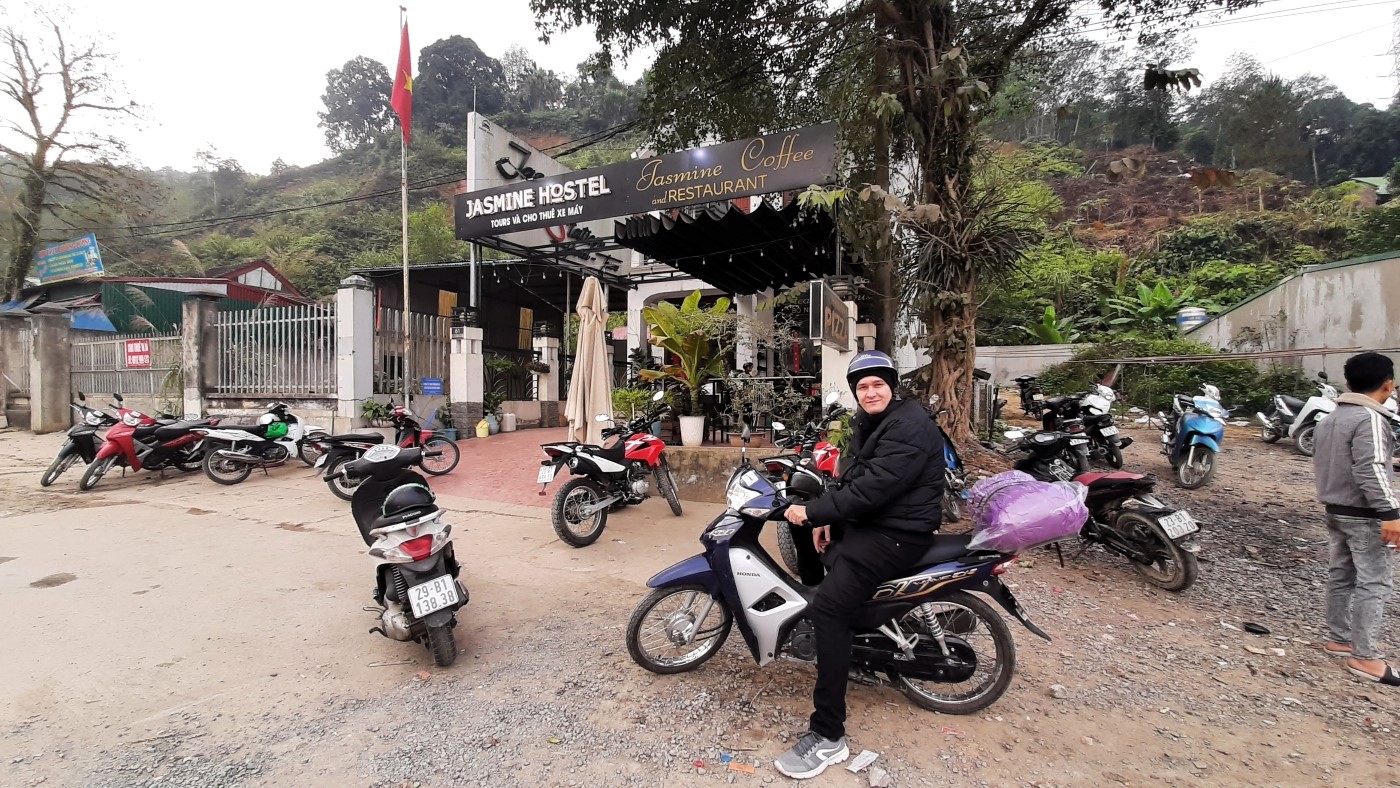
In conclusion, the Ha Giang Loop is a breathtaking journey through some of Vietnam’s most stunning landscapes. Whether you are an adventurous motorbike enthusiast or simply looking for a unique travel experience, this guide provides all the necessary information to make your trip safe and memorable. From navigating the winding roads to exploring ethnic minority villages and witnessing awe-inspiring natural wonders, the Ha Giang Loop offers a truly immersive cultural and scenic adventure. With its rich history, warm hospitality, and unparalleled beauty, this hidden gem in Northern Vietnam should not be missed by any traveller seeking an off-the-beaten-path destination. So grab your helmet, get on your bike, and embark on an unforgettable journey through the majestic beauty of the Ha Giang Loop.
Essential resources for travelling in Vietnam
Travel Insurance – It’s a good idea to have insurance, particularly if you’re going to be riding a motorbike. Our personal choice is Safteywing. You can opt for automatic monthly payments, just like a subscription. It can be purchased whilst already travelling and there is no cap on travel duration.
Visa – You are highly likely to need a visa for Vietnam. iVisa is a fantastic website that is super easy and quick to use. You can quickly make a visa application online.
Accommodation – Booking.com is our go-to when looking to pre-book accommodation online. Booking.com tend almost always to have the best rates and a FREE cancellation policy for most properties.
Overland transport – Our go-to website for overland transport is Bookaway. They have routes all over Vietnam and host a range of transport modes and companies. It is easy to book online and have your ticket sent to your phone.
Tours & Activities – If you want to book tours and activities for Vietnam online, make sure to check out Get Your Guide. Get Your Guide takes the stress out of booking activities abroad. You will also find a range of benefits, such as skip-the-line passes, lunch included in your tours, and so much more.
